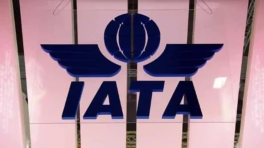Standing in the shallow waters of Someshwari, these miners find coal
Every year, the monsoon flash-flood carries huge amounts of silica and silt mixed in with coal, washed down from the Meghalaya coal fields, and deposits it in the Someshwari. The coal is left buried in layers of silts

The Someshwari river bank vibrates with the constant buzz from its numerous motor pumps. Several hundred labourers are loading tipper trucks with silica sands – extracted from the quarries.
Amidst the noise, blue sky mixed with uneven purple of the distant Meghalaya hills, along the Durgapur horizon, reflects back on the calm, crystal clear water of Someshwari.
Some people, surrounded by floating dingis (non-motorised country boats), stand with half their bodies under the water. Some among them are tirelessly digging the river bed with their spades while others are pricking the bed with a long and shiny galvanised iron (GI) wire. Some are holding large triangle-shaped strainers.
When I wanted to get close to the men, a boy (aged about 12 perhaps) appeared, wading through the water. He offered me a Tk20 river cruise on his dingi.
The Someshwari water is knee-deep and crystal-clear. I could see the river bed covered with silica sand and glittering gravel. If the river can be crossed on foot, why should I rent a dingi? The boy said the bed is not as consistent as it looks to the naked eye. There are deep holes in some places and I would drown in those spots, he explained.
As our dingi reached closer to the men at work, I realised they were coal miners. They were mining coal from the river bed – clustered in groups of four to five.
Every year, the monsoon flash-flood carries huge amounts of silica and silt mixed in with coal, washed down from the Meghalaya coal fields, and deposits it in the Someshwari. The coal is left buried in layers of silts.
During the dry season when the water level recedes, the workers collectively extract more than a 100 tonnes of coal each day.

Approximately 1,500-1,600 men work across a stretch of 2-2.5 kilometres. They are all informal workers who live by mining 'black gold.' And according to local wholesalers, the price range varies between Tk8,000 and Tk14,000 per tonne, depending on the quality of coal.
Manik Miah - a young worker who has been doing this for the last decade - told me "when the water level recedes, we extract the coal."
The coal, though drenched in water, is highly flammable. Given the availability of the fossil fuel, brick kiln owners around Mymensingh division often source coal from Durgapur, said local workers.
I was curious about the origin of the coal. Because Someshwari does not have a coal mine.
The work of these miners
I met one Abdus Sobhan. The 53-years old man was simple in appearance. His full sleeved magenta T shirt made him stand out amongst his co-workers.
"From morning to noon (8:00 am-2:00 pm) I work here. I manage my family needs by extracting coal," he said. While speaking, he rested by sitting on the uncovered dingi. His sunburned skin can adapt to the scorching sun, he said.
Lifting a long GI wire, he showed me how the workers measured the presence of coal beneath the river bed.

"By planting this GI wire into the soft and silica-covered bed, we can sense the presence of minerals. If it feels very hard, it must be stone. If it feels sticky, it is wet coal," Sohban said, adding that coal is deposited and scattered along layers of silt. Nobody knows exactly where the 'black golds' are hidden.
"You can find coal either one foot or five feet beneath the river bed," the old miner added.
Soon after identifying the coal, one of the workers will set the bamboo-framed strainer against the strong river current while others will dig the river bed. The small particles of silica seep out of the strainer while chips of wet coal get blocked.
The diggers continue striking the river bed with their spade until the strainer becomes heavy. Then they fill sacks with the one mound of filtered coal and load the motorised boats anchored near them. The boat operators who are loyal to wholesalers later transport the coal to ports. For carrying each of the sacks, they get Tk10.
Miners' meagre pay
A miner extracts around a mound or less of coal and gets Tk300-Tk350 a day. Wholesalers set the miners' wages on the basis of a volatile coal market.
"Somehow, I run my family doing this only," a smiling Sobhan said. He has been doing this job for the last 20 years and supports a three-member family.
"Don't you get a cold or skin diseases working in water the whole day?" I asked. Riazul and Alam, co-workers, said they had adapted to the aquatic working environment.
"This water is clean and pure. We also drink this water. There is no problem with it," Sobhan claimed, standing firmly on the running river.
The miners seemed a bit unhappy with the daily wages. But they didn't want to argue with the Paikars – the coal traders.
"This is our only option for income," said Manik.

For the last couple of years, news media reports have brought the Someshwari miners' wage issue to the fore. A proposal to transform the labour sector into a formal one has been raised too.
I called the Durgapur Upazila Parishad Chairman, Jannatul Ferdous Ara, over the phone to get an update.
She said, "I have information that many workers earn Tk500 and more daily by mining coal. The wage discrimination is being eliminated day by day."
"To make the labour sector formal, we will support the miners if necessary," Jannatul said.


 Keep updated, follow The Business Standard's Google news channel
Keep updated, follow The Business Standard's Google news channel















